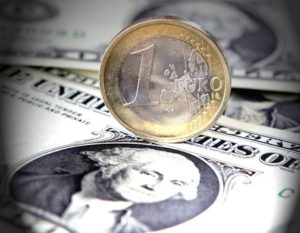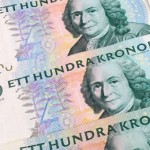 Yesterday’s trade saw EUR/USD within the range of 1.1184-1.1380. The daily low has also been the lowest level since January 26th, when a low of 1.1098 was recorded. The pair closed at 1.1203, losing 1.42% on a daily basis, or the largest daily drop since January 22nd.
Yesterday’s trade saw EUR/USD within the range of 1.1184-1.1380. The daily low has also been the lowest level since January 26th, when a low of 1.1098 was recorded. The pair closed at 1.1203, losing 1.42% on a daily basis, or the largest daily drop since January 22nd.
At 8:33 GMT today EUR/USD was up 0.14% for the day to trade at 1.1214. The pair touched a daily high at 1.1218 at 7:45 GMT.
Fundamentals
Euro area
Italian Consumer Inflation – preliminary estimate
Italys preliminary annualized consumer inflation probably ticked up to -0.5% in February, according to expectations, from a final rate of -0.6% in January, as reported on February 20th. The latter has been the lowest annual inflation ever recorded and the third time the country registered a negative rate since 1958, when the national statistics began tracking consumer prices.
In January the largest downward pressures, causing an impact on annual inflation rate, were reported for energy (down 9.1%), transport (-4.2%), housing, water, electricity and gas (-1.2%) and recreation and culture (-0.5%). The largest upward pressures came from restaurants and hotels (+0.9%), furnishing and household equipment (+0.5%) and clothing and footwear (+0.2%).
Key categories, included in Italys Consumer Price Index, are food and non-alcoholic beverages (accounting for 16% of total weight), transport (15%), restaurants and hotels (11%) and housing, water, electricity and other fuels (10%). Other categories are clothing and footwear (9%), furnishing and household equipment (8%), recreation and culture (8%) and health (also 8%). Communication, education, alcoholic beverages, tobacco and other goods and services comprise the remaining 15% of the index.
The nations preliminary annualized CPI, evaluated in accordance with the harmonized methodology, probably decreased 0.3% in February, according to market expectations, following a 0.5% drop in January. The latter has been the lowest annual core inflation on record. The National Institute of Statistics (Istat) is to release the official CPI report at 10:00 GMT.
German Consumer Inflation – preliminary estimate
German preliminary annualized consumer inflation probably stood at -0.2% during February, according to the median forecast by analysts. In January the final rate of inflation was reported at -0.4%, or the first negative annual inflation since September 2009, mostly driven by a drop in energy costs.
Energy costs went down 9.0% year-on-year in January, as prices of heating oil plunged 30.8% and prices of motor fuels dropped 15.4%. Prices of other energy products were also down, namely charges for central and district heating (-2.1%) and gas (-1.5%). Electricity prices, on the other hand, continued rising in January, up 0.2%, according to the report by Destatis. Last month prices of food and non-alcoholic beverages were 1.0% lower compared to January 2014.
The Consumer Price Index (CPI) presents a general picture of the price change in the country, while encompassing all household types, all regions and all goods and services demanded (food, clothing, automobiles, rental, repair and hairdressing services etc). The index is based on a basket of goods and services, which is regularly renewed, so that goods and services, purchased more often by consumers, are included in the present survey.
The nations preliminary annualized CPI, evaluated in accordance with the harmonized methodology, probably fell 0.4% in February, after another 0.5% decrease in January. The latter has been the lowest annual harmonized inflation since September 2009. The harmonized methodology is used for the sake of consumer inflation comparison in an international context (member states in the Euro area). In case the annualized CPI fell more than expected and further distanced from the 2-percent inflation objective, set by the European Central Bank, this would certainly mount selling pressure on the euro. Destatis is scheduled to publish the CPI report at 13:00 GMT.
United States
Gross Domestic Product – second estimate
The second estimate of the US Gross Domestic Product probably pointed to an annualized rate of growth of 2.1% in the fourth quarter of 2014, according to the median forecast by analysts. The preliminary GDP estimate for Q4, reported on January 30th, pointed to an annual growth of 2.6%. In Q3 economy expanded at an annualized rate of 5.0%, according to final data, or the most since Q4 2010, when the GDP grew 5.6%. The preliminary data showed that the fastest pace of consumer spending since 2006 was not enough to neutralize weaker business spending and a wider trade deficit.
Real personal consumption expenditures rose 4.3% during the fourth quarter of 2014, compared with an increase of 3.2% in Q3. Real nonresidential fixed investment increased 1.9% in the fourth quarter, compared with an increase of 8.9% in the prior. Real exports of goods and services were up 2.8% in the fourth quarter, following an increase of 4.5% in Q3. At the same time, real federal government consumption expenditures and gross investment contracted 7.5% in Q4, following an increase of 9.9% in the third quarter, according to data by the US Department of Commerce.
Currency traders will usually look for higher rates of growth as a sign that interest rates will follow the same direction. Higher interest rates will attract more investors, which will increase demand for the US dollar. If an economy is experiencing a robust rate of growth, the benefits will eventually affect the end consumer, because of the increased likelihood of spending. Furthermore, through increased consumer expenditures the economy has the potential to expand even more. In case the second GDP estimate outpaced expectations, this would certainly boost demand for the US dollar. The revised GDP figure is due out at 13:30 GMT.
Chicago Manufacturing PMI
The Chicago Purchasing Managers Index (PMI) probably slowed down to a reading of 58.0 in February from 59.4 during the prior month. If so, this would be the lowest reading since July 2014, when the PMI came in at 52.6. The index reflects business conditions in the regions manufacturing sector and is interrelated with the Manufacturing Index, published by the Institute for Supply Management (ISM). A reading above the key level of 50.0 is indicative of expansion in manufacturing activity. In case the PMI slowed down more than forecast, this would reduce the appeal of the US dollar. The MNI Deutche Börse Group will release the official reading of the Chicago barometer at 14:45 GMT.
Pending Home Sales
The index of pending home sales in the United States probably rose 1.8% during January compared to December, when sales were down 3.7%. The latter has been the largest monthly drop since December 2013, when a rate of 5.8% was recorded.
When a sales contract is accepted for a property, it is recorded as a pending home sale. As an indicator the index provides information on the number of future home sales, which are in the pipeline. It gathers data from real estate agents and brokers at the point of a sale of contract and is currently the most accurate indicator regarding US housing sector. It samples over 20% of the market. In addition, over 80% of pending house sales are converted to actual home sales within 2 or 3 months. Therefore, this index has a predictive value about actual home sales.
Although there are some cancellations, there are not enough for the data to be skewed one way or another. The base value of the index is equal to 100, while the base year is 2001, when there has been a high level of home sales.
The National Association of Realtor’s (NAR) will release the official index value at 15:00 GMT. In case pending home sales increased more than anticipated, this would have a certain bullish effect on the greenback.
Reuters/Michigan Consumer Sentiment Index – final
The monthly survey by Thomson Reuters and the University of Michigan may show that consumer confidence in the United States lowered in February. The final reading of the corresponding index, which usually comes out two weeks after the preliminary data, probably came in at 94.0, up from a preliminary value of 93.6, reported on February 13th. In January the gauge of confidence came in at a final reading of 98.1, or the highest level since January 2004. The survey encompasses about 500 respondents throughout the country. The index is comprised by two major components, a gauge of current conditions and a gauge of expectations. The current conditions index is based on the answers to two standard questions, while the index of expectations is based on three standard questions. All five questions have an equal weight in determining the value of the overall index.
According to preliminary data, the sub-index of current economic conditions, which measures US consumers’ views of their personal finances, decreased to a reading of 103.1 in February from a final 109.3 in January. The latter has been the highest level in eight years. The sub-index of consumer expectations came in at a reading of 87.5 in February, down from a final value of 91.0 in January.
In case the gauge of consumer sentiment showed a larger decrease than anticipated, this would have a bearish effect on the US dollar. The final reading is due out at 15:00 GMT.
Pivot Points
According to Binary Tribune’s daily analysis, the central pivot point for the pair is at 1.1256. In case EUR/USD manages to breach the first resistance level at 1.1327, it will probably continue up to test 1.1452. In case the second key resistance is broken, the pair will probably attempt to advance to 1.1523.
If EUR/USD manages to breach the first key support at 1.1131, it will probably continue to slide and test 1.1060. With this second key support broken, the movement to the downside will probably continue to 1.0935.
The mid-Pivot levels for today are as follows: M1 – 1.0998, M2 – 1.1096, M3 – 1.1194, M4 – 1.1292, M5 – 1.1390, M6 – 1.1488.
In weekly terms, the central pivot point is at 1.1371. The three key resistance levels are as follows: R1 – 1.1463, R2 – 1.1546, R3 – 1.1638. The three key support levels are: S1 – 1.1288, S2 – 1.1196, S3 – 1.1113.





